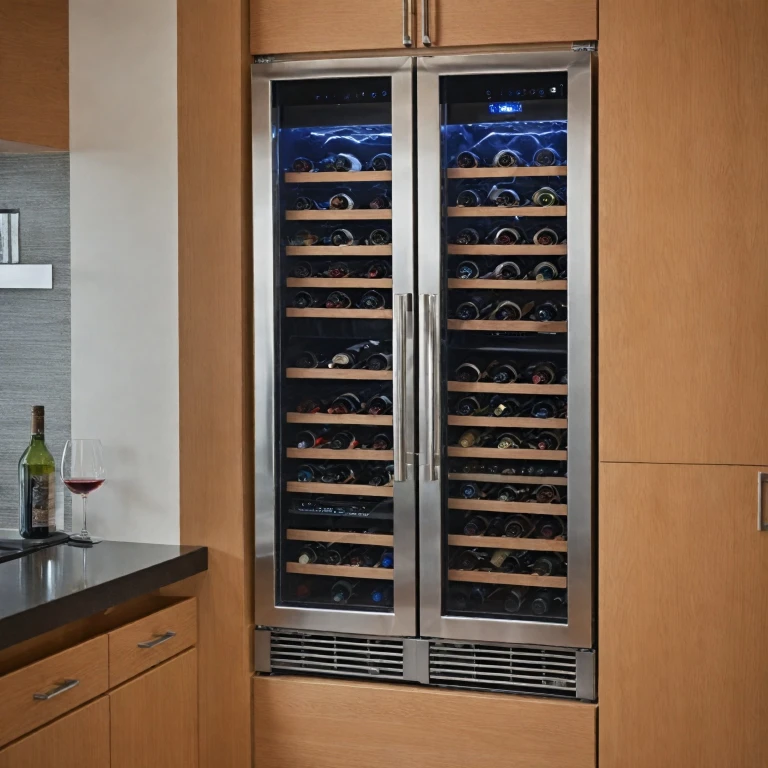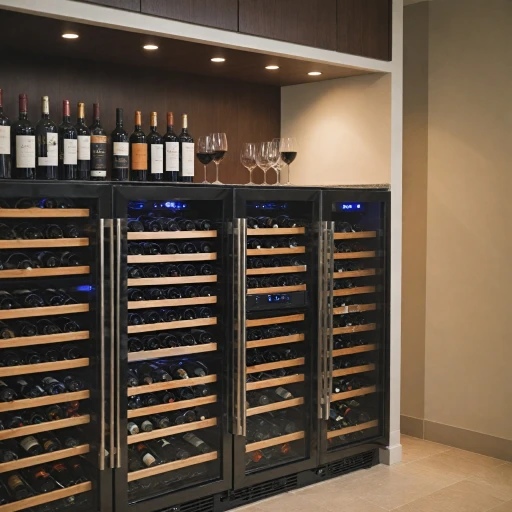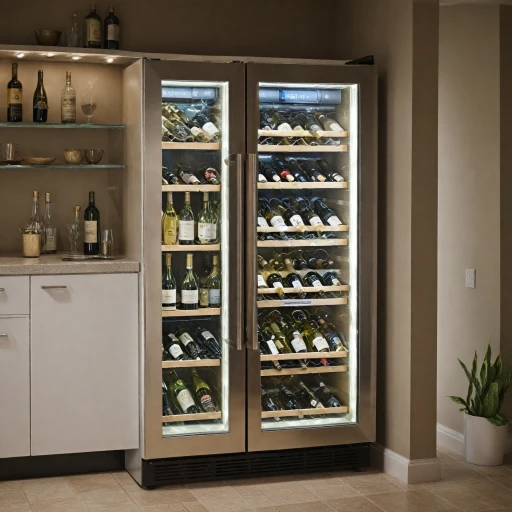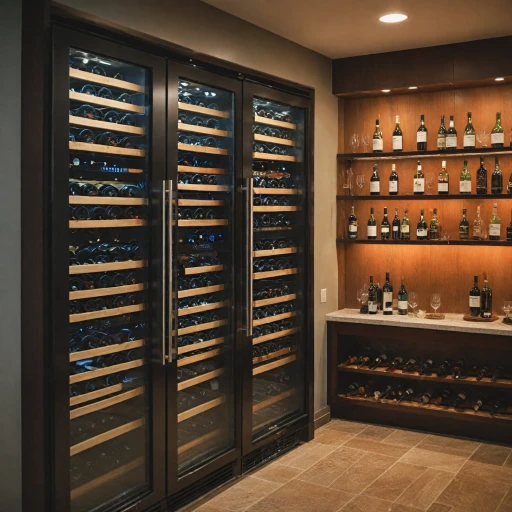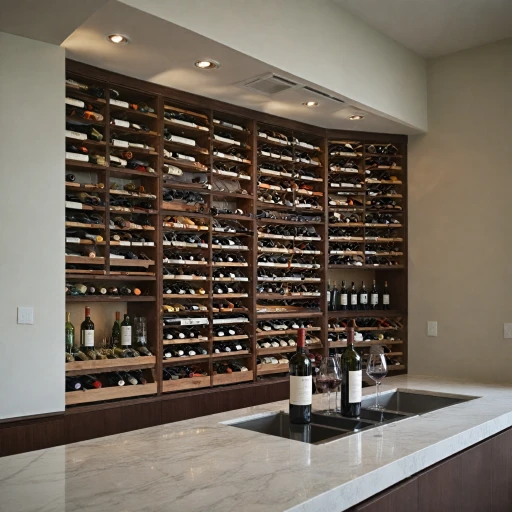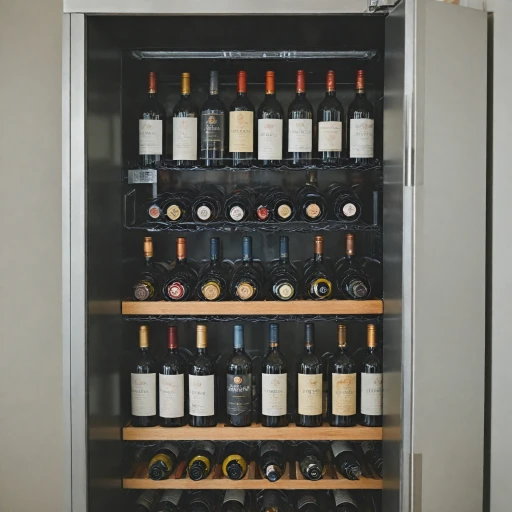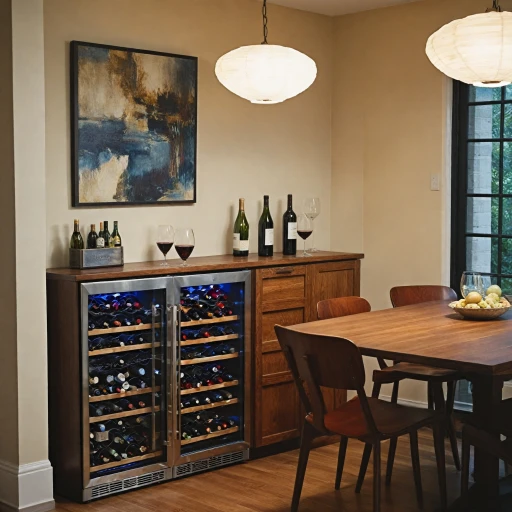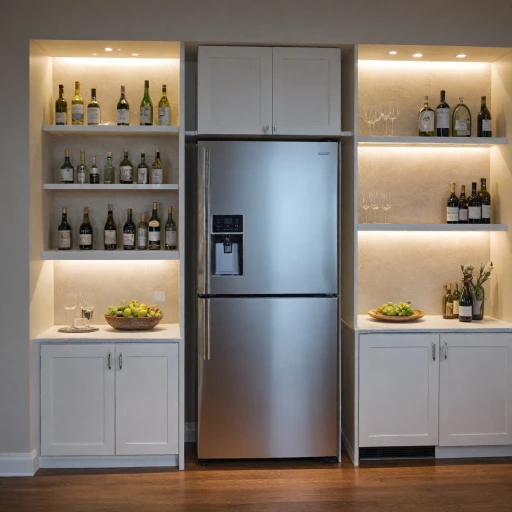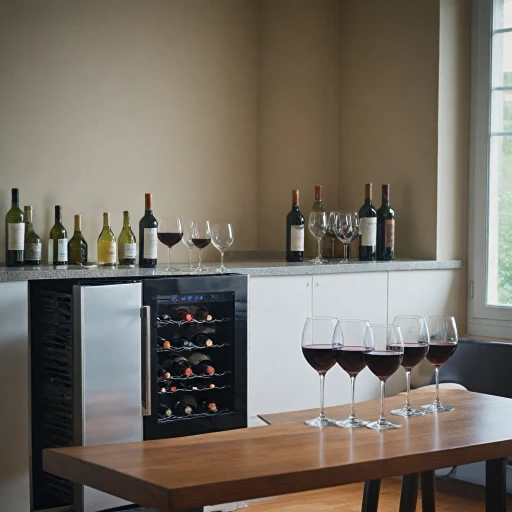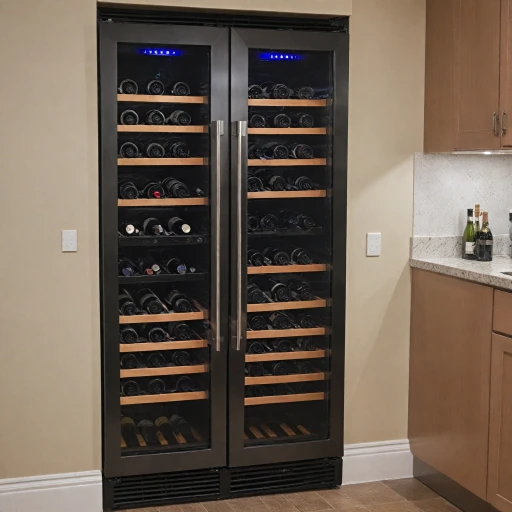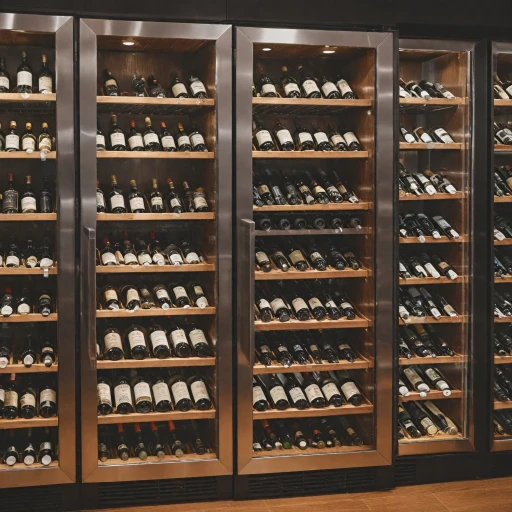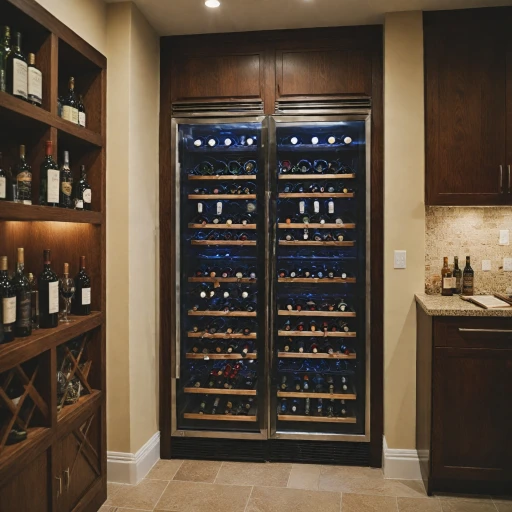
Understanding Wine Cooler Temperature Basics
Mastering the Right Temperature for Wine Storage
When it comes to storing wine, understanding the nuances of temperature control is crucial. A wine cooler plays a key role in maintaining the best environment to preserve the quality of your collection. Whether you own a wine fridge, wine refrigerator, or single zone wine cooler, getting the temperature settings just right will determine how your wines flourish.
The general advice might be to keep wines cold, particularly white wines. However, serving wine at too cold a temperature can mute the flavors and aromas. Similarly, serving red wine too warm can amplify alcohol notes instead of the nuanced flavors intended by the winemaker. Therefore, the question of 'what temperature' to set your wine cooler to isn't as straightforward as it might seem.
Your wine type will dictate different serving temperatures. White wines, including rose wine, typically require cooler settings inside wine fridges. On the other hand, red wine needs slightly less chill to maintain its character. It’s essential to recognize these differences for optimal wine storage and serving temperature management.
Delving deeper, single zone wine coolers offer a uniform temperature, ideal for storing one type wine at its best serving temperature. Yet, for those who collect both red and white wine, a dual-zone wine cooler might prove beneficial. This allows to set distinct temperature ranges within the same wine refrigerator, accommodating the different needs of red and white wine.
Ultimately, effective wine storage isn't just about keeping wine cold. It's about creating the perfect environment for your wine bottles to retain their intended qualities, whether they need to be served at room temperature or chilled. In subsequent sections, we'll explore the specific temperature needs of red versus white wine and offer advanced tips on managing temperature effectively in your wine cooler.
Red vs. White: Different Temperature Needs
The Importance of Differentiated Serving Temperatures
Understanding what temperature each type of wine requires is crucial to achieving the best experience from both red wines and white wines. Each has an optimal serving temperature that enhances their flavors and characteristics.
For white wines, it is generally recommended to be served chilled, often in the range of 45°F to 50°F. This allows the subtle flavors of the wine to be more pronounced and refreshing to the palate. White wine can suffer in flavor profile if it is too cold, as the cold can mask the wine's aroma and taste. Conversely, red wines are best served between 60°F and 65°F, which is slightly cooler than room temperature. Serving a red wine too warm can make it taste overly alcoholic, while serving it too cool can suppress its bouquet.
A single zone wine fridge can make maintaining these temperatures challenging if you store different types of wine together. Investing in a dual-zone wine cooler could be beneficial, allowing you to store whites and reds in their respective optimal climates. For a comprehensive guide on achieving the optimal temperatures for wine chillers, consider researching more detailed resources.
It’s also important not to mistakenly store rose wines at the same temperature as a red wine, since they are more akin to white wine in terms of serving temperature. To enjoy wine served properly, always consider its unique requirements.
The Role of Humidity in Wine Storage
The Impact of Moisture Levels on Wine Storage
While temperature often steals the spotlight in wine storage, humidity plays a pivotal role that should not be overlooked. Proper humidity levels are crucial in preserving cork integrity and preventing spoilage, ensuring your bottles are well-protected during storage. A wine cooler, whether used for red or white wine, should ideally maintain a humidity of around 70%. This level helps avoid both mold growth from excessive moisture and drying out of corks that lead to premature aging of wine.
Most wine coolers or wine refrigerators are designed to keep this delicate balance. However, the exact settings can vary based on the type of cooler you own, such as a single zone cooler versus a dual-zone unit. It's necessary to understand the best humidity range for the type of wine you intend to store. For instance, red wines, which are generally served at or slightly below room temperature, often benefit from a stable humidity level to enhance their longevity.
Investing in a wine fridge with humidity control features is wise, especially for avid collectors. If you're unsure about your cooler's capabilities, consult the product manual or reach out to your manufacturer for specific guidance. For further tips on ideal temperature and humidity settings, you may refer to this page about the alluring aspects of red-tinted wine glasses.
Common Mistakes in Wine Cooler Temperature Settings
Common Pitfalls in Wine Cooler Temperature Management
Managing the temperature settings of your wine cooler is crucial, whether you're dealing with red or white wines. However, many wine enthusiasts stumble upon a few common mistakes that can hinder optimal wine storage:- Failing to Adjust for Red and White Wines: Red and white wines have different temperature needs. While red wine is generally best served between 12-18°C, white wine is often served colder, around 8-12°C. Mixing these wines in a single zone wine fridge without adjusting the temperature can affect the wine's taste and quality.
- Overlooking Humidity: While typically seen as less pressing, humidity plays a role in wine storage. An overly cold environment can dry out corks, leading to spoilage. Aim for a moderate humidity level that prevents corks from drying out without causing mold.
- Storing Non-Wine Items: Avoid using your wine fridge for food or beverages other than wine. The temperature settings for wines, especially reds and whites, are specific and may not be ideal for other items typically stored in a regular refrigerator.
- Incorrect Placement of Wine Bottles: Position your wine bottles horizontally to ensure the cork remains moist. This is vital for maintaining the right seal and ensuring wine is stored properly.
- Assuming One-Size-Fits-All: Different types of wines, such as rose wine or sparkling, may have specific temperature requirements. It's essential to be aware of the ideal temperature for each specific type instead of adhering to a general rule for all.
Advanced Tips for Wine Cooler Temperature Management
Enhanced Techniques for Optimal Wine Temperatures
In the pursuit of mastering your wine cooler's potential, fine-tuning the temperature settings plays a pivotal role. Tailoring your wine's environment can greatly impact its flavor and preservation.- Dual-Zone Wine Coolers: For collectors of both red and white wines, consider using a dual-zone cooler. This setup allows you to adjust temperatures for each compartment. Reds generally thrive best between 55-65°F, while whites and roses love the chillier 45-55°F range. This type of cooler provides versatility and ensures each wine variety is kept at its ideal serving temperature.
- Consider Seasonal Adjustments: Ambient room temperature can fluctuate with the seasons, affecting the inside temperature of your fridge. Keep an eye on your cooler's settings during varying climates. Be ready to tweak as needed to maintain consistent storage conditions.
- Monitoring and Adjustment Tools: Utilizing a quality thermometer can provide more accurate readings than the fridge’s built-in display. Consistent monitoring helps in aligning the setting with the desired temperature, ensuring that your wines are served at their very best.
- Avoid Frequent Opening: Every time the door is opened, cold air escapes, and warm air enters. This disturbance can affect the temperature equilibrium inside the wine fridge. Try to minimize opening the door unless necessary to help maintain steady conditions for all types of wine stored.
Troubleshooting Temperature Issues in Wine Coolers
Identifying and Solving Temperature Fluctuations
Temperature fluctuations can be a common issue in wine fridges, significantly impacting the quality of your wine storage. Whether you own a single zone or multi-zone wine cooler, understanding the nature of these inconsistencies is key.
Start by checking the thermostat setting on your wine refrigerator. Inaccurate settings could lead to both red wine and white wine being stored at unsuitable temperatures, which can alter the taste and aroma when served. Ensure that each type of wine is being kept at its ideal serving temperature—what temperature wine is best served can be found in your refrigerator's manual or trusted wine resources.
Inspecting for Precise Functionality
Examine the functionality of vital components, such as the cooler's seal and fan. A worn-out seal may allow room temperature air to seep into the fridge, causing the internal climate to deviate. Meanwhile, an operational fan ensures an even distribution of cold air, promoting harmonious wine storage conditions across all zones.
Sometimes, improper wine cooler placement is to blame. A wine cooler should not be located next to heat-generating appliances or in a spot with direct sunlight exposure. Such settings can interfere with the ability of the refrigerator to maintain the best wine storage temperatures, affecting all wine types.
Addressing Environmental Factors
Room temperature plays a pivotal role in the overall performance of a wine cooler. If the ambient room temperature is either extremely cold or hot, your wine cooler may have difficulty maintaining its setting. To address such scenarios, consider providing additional external cooling or heating where needed to stabilize the environment.
Pursuing Professional Assistance
When handling advanced storage issues or persistent temperature problems, consultation with professional maintenance services is often beneficial. They can perform an in-depth analysis to pinpoint precise causes and propose effective solutions to help an array of bottles—from red wine to rose wine—be served optimally.
